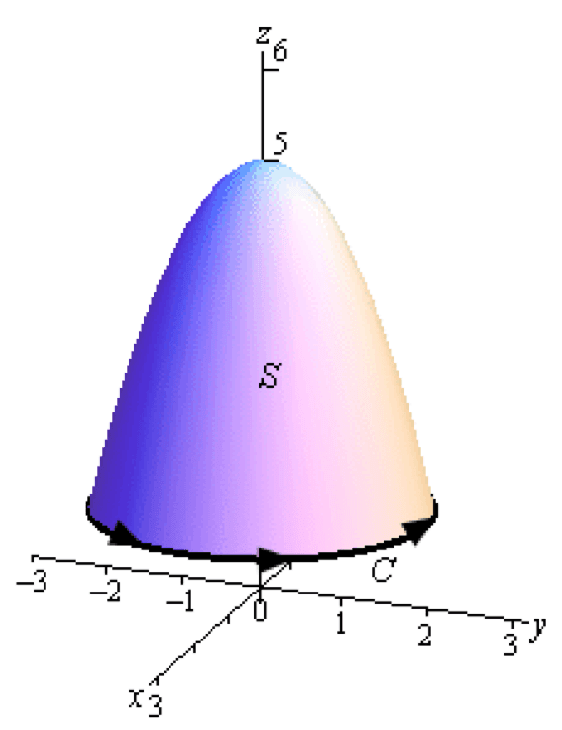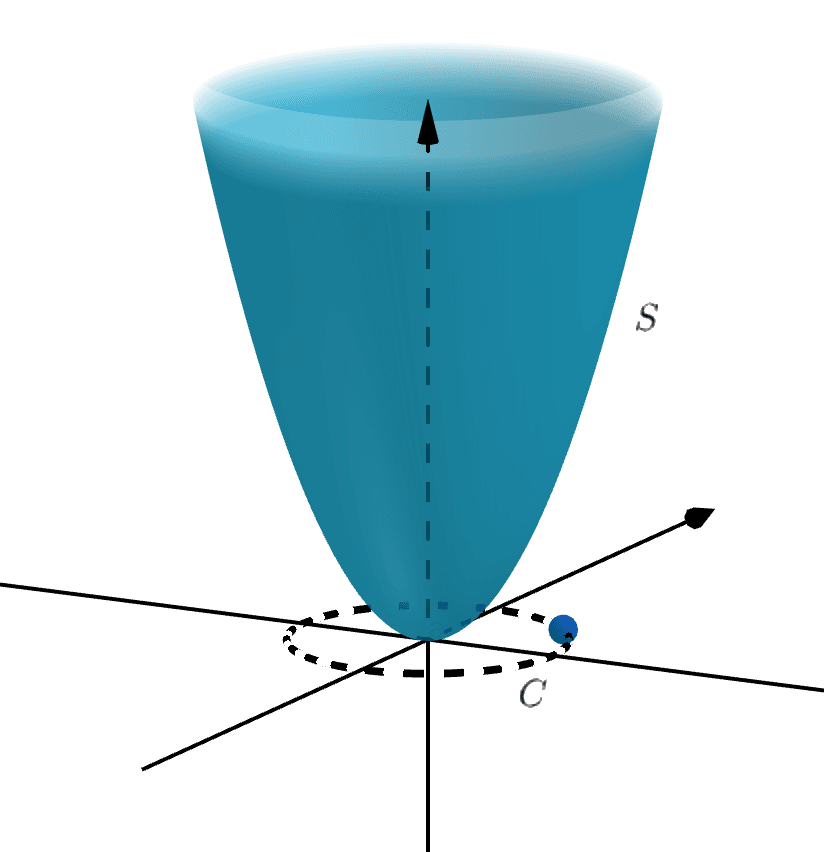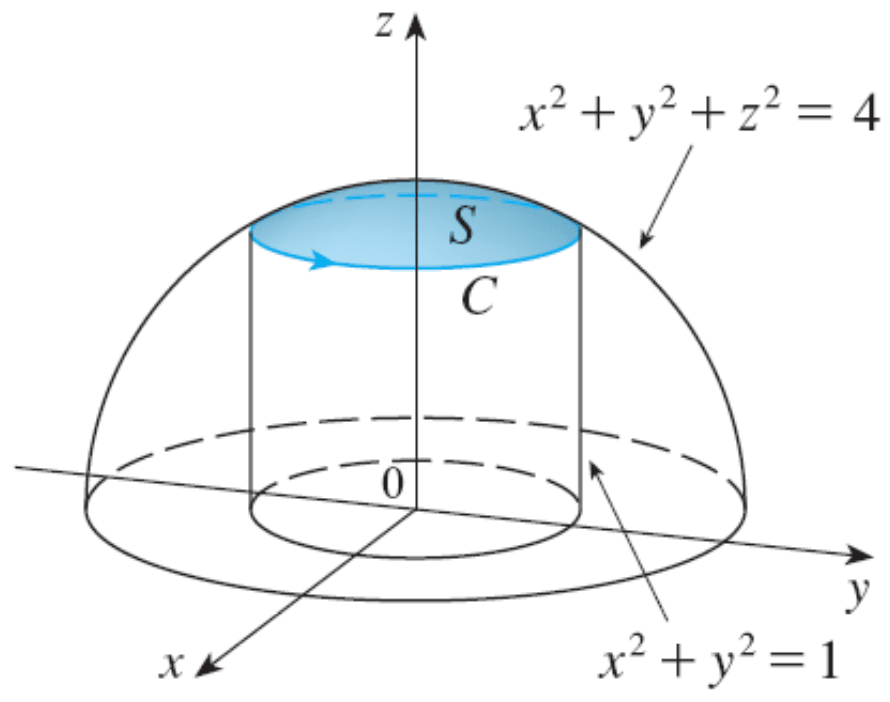Tutorial 14
Tutorial 14: Stokes' Theorem
Suppose and is the part of the sphere below the plane , oriented with the outward-pointing normal (so that the normal at is ). Compute the flux integral using Stokes' theorem.
SolutionAgain we integrate the line integral over the boundary curve rather than the flux integral over the (more complicated) surface .
The boundary curve is the circle (or ) in the plane , but a note of caution is in order.
The natural parameterization (or the one we usually think of) is actually parameterizes (that is, with the opposite orientation)!
Why is that? Imagine a person walking this boundary with their head in the normal (outward) direction. The remaining part of the sphere is on their right if they’re walking counter-clockwise. It should be on their left, so they should be walking clockwise.
We’ll calculate anyway, since we like the parameterisation. In terms of this parametrisation,
Thus,
and so, .
Use Stokes' theorem to evaluate where and is the part of above the . Assume that is oriented upwards.
Solution
In this case the boundary curve will be where the surface intersects the plane and so will be the curve
So, the boundary curve will be the circle of radius 2 that is in the plane . The parameterization of this curve is,
The first two components give the circle and the third component makes sure that it is in the plane .
Using Stokes’ Theorem we can write the surface integral as the following line integral.
So, it looks like we need a couple of quantities before we do this integral. Let’s first get the vector field evaluated on the curve. Remember that this is simply plugging the components of the parameterization into the vector field.
Next, we need the derivative of the parameterization and the dot product of this and the vector field.
We can now do the integral.
Use Stokes' theorem to evaluate where and is the triangle with vertices and with counter clockwise rotation.
SolutionWe are going to need the curl of the vector field eventually so let’s get that out of the way first.
Now, all we have is the boundary curve for the surface that we’ll need to use in the surface integral. However, as noted above all we need is any surface that has this as its boundary curve. So, let’s use the following plane with upwards orientation for the surface.
Since the plane is oriented upwards this induces the positive direction on as shown. The equation of this plane is,
Now, let’s use Stokes’ Theorem and get the surface integral set up.
Okay, we now need to find a couple of quantities. First let’s get the gradient. Recall that this comes from the function of the surface.
Note as well that this also points upwards and so we have the correct direction.
Now, is the region in the -plane shown below,
We get the equation of the line by plugging in into the equation of the plane. So based on this the ranges that define are,
The integral is then,
Don’t forget to plug in for since we are doing the surface integral on the plane. Finishing this out gives,
Verify Stokes' Theorem for the field on the ellipse
SolutionWe compute both sides in

We start computing the circulation integral on the ellipse . We need to choose a counterclockwise parametrization, hence the normal to points upwards.
We choose, for ,
Therefore, the right-hand rule normal to is
The circulation integral is:
The substitution on the first term and , implies .
Since , we conclude that
We now compute the right-hand side in Stokes’ Theorem.
is the flat surface , so
Then,
The right-hand side above is twice the area of the ellipse, Since that an ellipse has area , we obtain
Verify Stokes' Theorem for and is the paraboloid with the circle as its boundary.
Solution
Surface integral,
is region in side , a unit circle.
Switching to polar coordinates:
Hence,
Line integral,
: unit circle Switch to polar coordinates,
Hence,
Use Stokes' Theorem to calculate for where is the part of the ellipsoid below the -plane and is the lower normal.
SolutionUsing polar coordinates,
Hence,
Use Stoke's Theorem to evaluate the line integral where is the vector and is the curve of intersection of the cylinder and the plane and is oriented in a counterclockwise direction when viewed from above.
SolutionThe of is computed as,
Now, writing the plane as the level surface ,
Applying Stokes’ theorem,
Evaluate the line integral of over the curve that is the intersection of the cylinder with the plane .
SolutionTo describe the surface enclosed by , we use the parameterisation
Using and , we obtain,
Compute the curl,
Let be the domain of the parameter,
Using Green’s Theorem,
Evaluate where and is the part of the sphere that lies inside the cylinder and above the -plane.
Solution
Surface is bounded by a circle formed by the intersection of the sphere of radius 2 and the cylinder of radius 1.
We can describe using the vector-valued function,
Using Stokes’ Theorem,